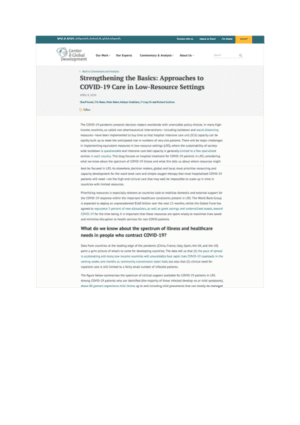
April 8, 2020
The COVID-19 pandemic presents decision makers worldwide with unenviable policy choices. In many high-income countries, so-called non-pharmaceutical interventions—including lockdown and social distancing measures—have been implemented to buy time so that hospital intensive care unit (ICU) capacity can be rapidly built up to meet the anticipated rise in numbers of very sick patients. There will be major challenges in implementing equivalent measures in low-resource settings (LRS), where the sustainability of society-wide lockdown is questionable and intensive care bed capacity is generally limited to a few specialised centres in each country. This blog focuses on hospital treatment for COVID-19 patients in LRS, considering what we know about the spectrum of COVID-19 illness and what this tells us about where resources might best be focused in LRS. As elsewhere, decision makers, global and local, must prioritise resourcing and capacity development for the ward-level care and simple oxygen therapy that most hospitalised COVID-19 patients will need—not the high-end clinical care that may well be impossible to scale-up in time in countries with limited resources.
